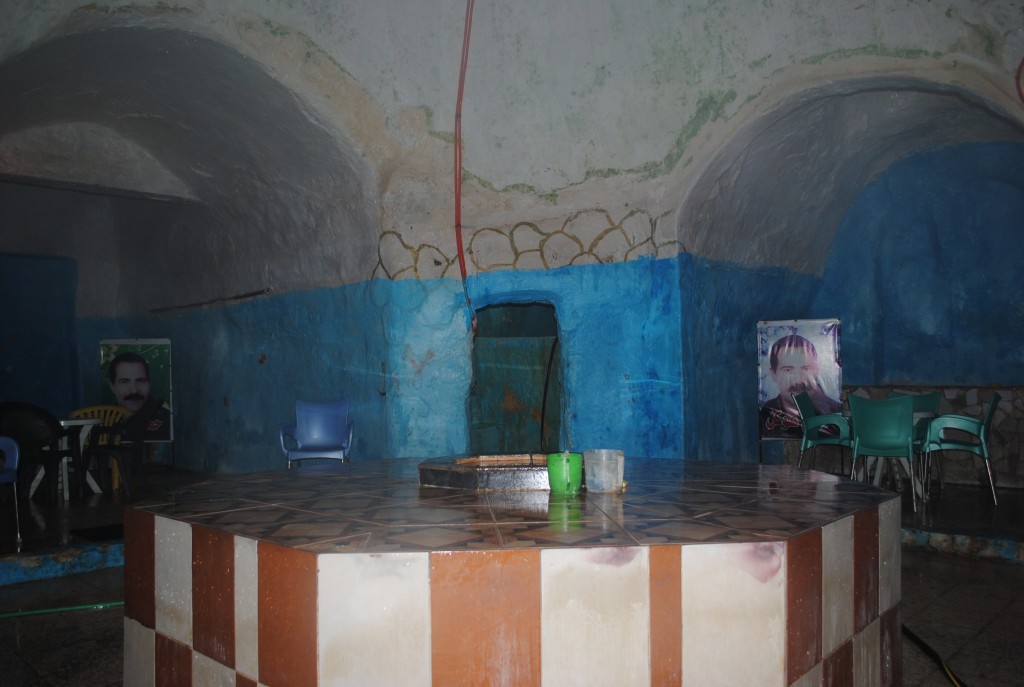Bath houses have been part of Cairo’s heritage since medieval times. The bath houses, or Hammam as they are called in Arabic, were first founded by the Fatimid caliph Al-‘Aziz Bellah. The bath houses of Cairo, built to be Egypt’s capital by his father, the Fatimid Caliph Al- Moez, used to be the meeting place for traders and travellers who passed through the city and its inhabitants to bathe, rest, recuperate and exchange news.
The golden age of bath houses in Egypt was during Ottoman rule. According to some chronicles, Cairo contained more than 137 bathhouses in those days, yet today the number has waned to only 16 and is still dwindling.
Bath houses that still thrive are “El-Malately” and “El-Talat”, but the most famous one still operating is the “El-Arba’” or “Oakel” bath house, run by Hajj Mohammed Oakel located in the Boulaq neighbourhood, in North East Cairo.
Oakel believes that there is no other bathhouse in Egypt that offers better service than his does. On entering the bathhouse, visitors pass through a narrow passage to reach the reception, which is a square and high ceilinged hall with many couches and seats placed along its sides for bathers to rest or wait for their turn. On the right is the office of Hajj Oakel, and next to it a small oratory raised to occupy a corner where in the old days “occupants used to commit obscene deeds and sins,” according to Hajj Oakel.
The bathhouse was abandoned by its old owners and it became a hangout for the city’s petty criminals, until it was bought by Hajj Oakel who renewed and restored it to its former glory.
From the hall, a small door leads to the bath lobby and a different world where the light is dimmer and the environment is hotter and more humid. The lobby sports four tables in the corners, each with some chairs for bathers to rest, eat or drink, centred around a high round deck where massages and scrubs take place.
A typical visit will take two hours and bathers will pass through five steps. The first stage involves ten minutes of hot steam, followed by the second step of a dip in a hot water bath followed immediately by a plunge in a cold water one. This process is repeated three to four times in order to open the pores in the skin and get rid of sweat and dirt. At the third stage Mohammed Khames, a professional masseur with 20 years of expertise, gives the bather a thorough massage. Khames is mentor to many young masseurs, who come to learn the tricks of the trade and understand what a proper massage entails.
The fourth step involves a thorough scrubbing with a Moroccan bath loofah, which will remove dead skin cells and accumulated dirt, which is concluded with the last step, a final rinse with soap and a regular loofah, leaving bathers refreshed and relaxed.
The Oakel Bathhouse is 500 years old and its historical legacy can be seen and felt in the way the architecture guarantees privacy and warmth for the bathers, as well as in the ornamented pillars’ capitals depicting the same ornaments found in the Islamic ancient mosques of old Cairo like Al-Azhar and Amr Ebn-El-‘As.
Visitors will find more than just a regular bath house experience in the “El- Arba’” or “Oakel,” they will go on a journey many went before, in an ancient location where many historic plots were conceived and the memories of a plethora of stories and incidents still faintly echo in the damp walls.





